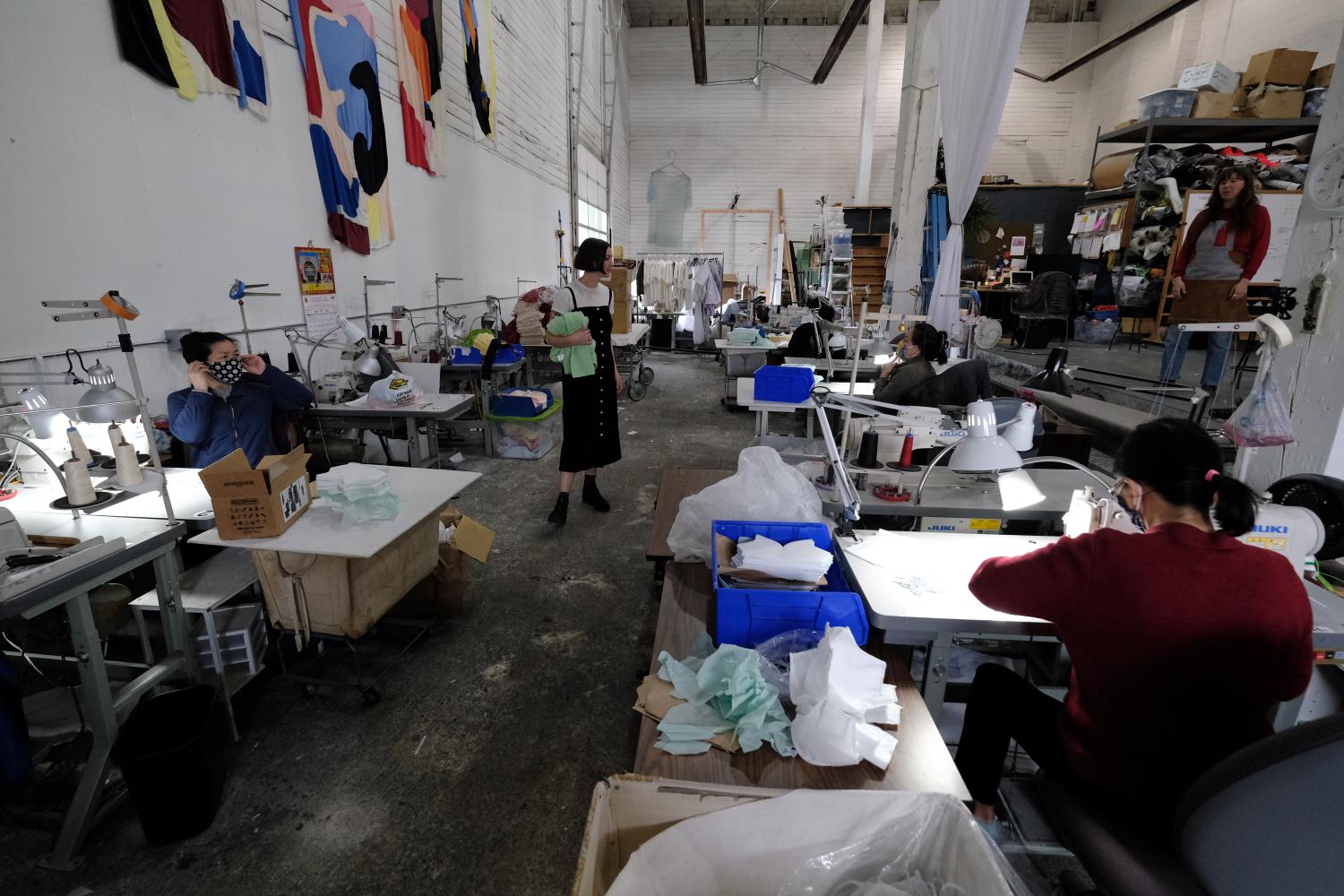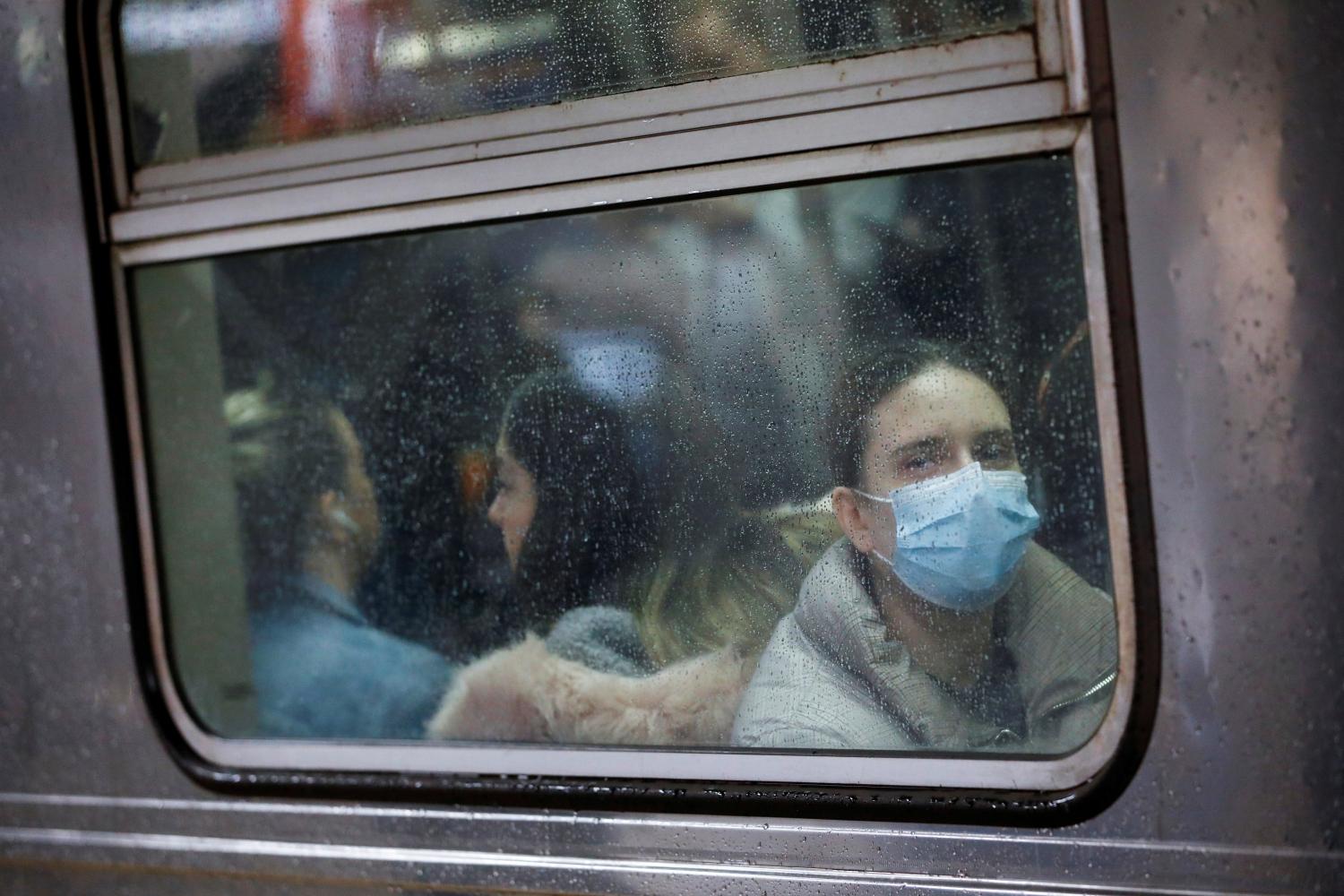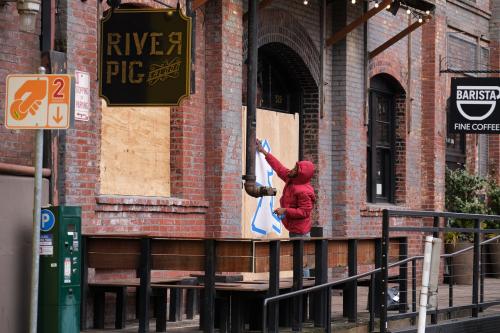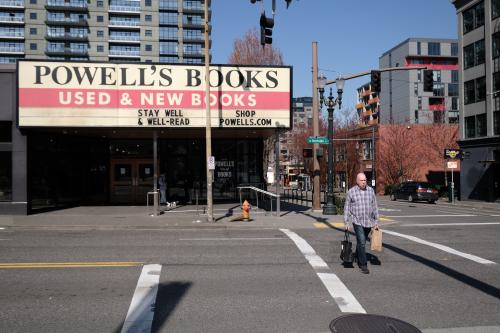There are two small business crises in the United States. The first—the sudden shock to small businesses induced by COVID-19—is acute and immediate. Our recent analysis indicates that over 50% of small businesses with employees (an astounding 4 million establishments) face immediate or near-term risks due to the pandemic.
The second crisis—the structural racial and gender disparities in business ownership—is continuous and long-standing, but equally damaging. Nationally, people of color represent about 40% of the population, but only 20% of the nation’s 5.6 million business owners with employees. The U.S. could have millions more businesses if women and minorities became entrepreneurs at the same rate as white men.
Both crises result in millions of “missing businesses,” but one has generated far more attention than the other. The COVID-19 small business crisis has inspired a historic policy response because the nation is facing a massive potential disruption to a well-known status quo. Structural exclusion that limits entrepreneurship is no less insidious than COVID-19’s impact on small businesses, but because it is already a status quo that’s been built up over decades, there is not the same urgency to address it—even if closing these disparities would result in millions of new small businesses.
This brief reviews how these two crises are interlinked and mutually reinforcing. It recaps the state of racial and gender equity within business ownership, the challenges that minority- and women-owned business enterprises (MWBEs) faced during the depths of the Great Recession, and how the COVID-19 small business crisis may disproportionately impact MWBEs.
The U.S. already has millions of ‘missing businesses’
Demographic disparities in business ownership are well-documented. Research shows that a variety of factors limit women and people of color as they consider starting and growing businesses, including disparities in educational attainment, personal wealth, and access to capital. These are structural impediments to entrepreneurship, and do not reflect the inherent entrepreneurial abilities or interests of different groups.
Historical discrimination that persists today has further exacerbated the problem. Our Brookings colleagues have found that highly rated businesses in Black-majority neighborhoods earn less revenue than businesses with similar ratings outside of Black neighborhoods. This translates to a nationwide annual revenue loss as high as $3.9 billion.
This structural exclusion has served as a drag on overall business ownership. As stated earlier, people of color are about 40% of the population, but only 20% of the nation’s 5.6 million business owners with employees. If ownership shares matched population shares, people of color would own 50% more businesses than they currently do now. Put another way, the “disparity ratio”—the ratio of business ownership share to population share—is 50% for people of color. Similarly, women are 51% of the U.S. population but only 33% of business owners with employees, a disparity ratio of 65% (Figure 1)1.

These same forces also limit the growth and expansion of MWBEs. On average, MWBEs have 30% fewer employees compared to male- or white-owned businesses. Average sales of an MWBE are about 50% to 90% of their counterparts, controlling for employment size (Figure 2). All this adds up to lost jobs, lost income, and lost wealth-building among these groups and for the economy overall.

MWBEs were less likely to survive the Great Recession, but drove the recovery
Economic shocks such as COVID-19 or the Great Recession have disproportionate impacts across sectors, communities, and individuals. To understand what happened to MWBEs during the last economic shock, we examined the outcomes for all businesses (regardless of size) owned by women and people of color during the Great Recession. Importantly, most of these businesses are small—the average MWBE has eight employees, and 98% of all MWBEs had fewer than 50 employees as of 2016 (the most recent year of data).
Small businesses experienced disproportionate job losses during the Great Recession, but the pain was even greater for female- and Black-owned businesses. In one study, the Census Bureau found that about 60% of white-owned businesses that existed in 2002 “survived” until 2011, compared to 49% of Black-owned businesses. Similarly, 61% of male-owned businesses survived until 2011, compared to 55% of female-owned businesses. The unique, housing-induced nature of the Great Recession likely played a role; Black owners relied more on home equity to provide capital for their business, and were therefore more exposed as housing prices declined.
Although MWBEs were more likely to shutter during the Great Recession, they helped stabilize the economy during the recovery period. Nationally, MWBEs added 1.8 million jobs from 2007 to 2012, while firms owned by white males lost 800,000 jobs, and firms equally owned by white men and women lost another 1.6 million jobs.
Industry trends and demographic differences in ownership rates within industries partly explain this phenomenon. The Great Recession stalled the construction and manufacturing industries, two sectors that have high shares of white and male owners. Meanwhile, the recovery was largely fueled by growth in the health care, accommodation, and food services industries, which have higher shares of MWBE ownership (Figure 3).

This demographic shift in business ownership was also a response to the fact that people of color experienced higher unemployment rates during the Great Recession. One study examining employment transitions during the recession suggested that those who are unemployed are more likely to start a business during a recession as a means to avoid prolonged unemployment and financial hardship.
The stronger growth of minority-owned businesses in the wake of the Great Recession may also reflect the fact that the nonwhite population is increasingly responsible for the nation’s net population growth. But even after controlling for this changing demographic structure, many metro areas achieved noticeable improvements in their entrepreneurship disparity ratios between 2007 and 2012 (Figure 4).
To recap, a disparity ratio of 100% means that the share of people of color that own businesses is the same as the share of people of color in the overall metro area’s population. While no metro area has achieved full equity, many are showing gains. Between 2007 and 2012, Deltona, Fla. and Harrisburg, Pa. improved their disparity ratio from around 40% (meaning people of color owned businesses at 40% of the rate of their overall share of the population) to 60%. (For a full list of the top 100 metro areas, see the data appendix.)

MWBEs are most at-risk from COVID-19, but may benefit less from policy solutions
After a decade of business ownership gains, the COVID-19 recession has the potential to be disproportionately devastating to MWBEs. Whereas the Great Recession hit manufacturing and construction hard, COVID-19 is putting the food services, retail, and accommodation industries at immediate risk.
Of these businesses in immediate-risk industries, 39% are female-owned, or equally female- and male-owned, compared to 29% of business in industries at near-term risk and 36% at long-term risk. Similarly, 20% of businesses in immediate-risk industries are run by Asian American or Black owners, compared to 7% of businesses in industries at near-term risk and 12% at long-term risk (Figure 5).

Congress’s signature small business relief program for COVID-19—the Paycheck Protection Program—relies on mainstream financial institutions to deliver loans to small businesses. While this approach allows for scale (and hopefully speed), it also favors existing customers at large banks and may be less relevant to underbanked and unbanked MWBEs. Large banks approve about 60% of loans sought by white small business owners, 50% of loans sought by Latino or Hispanic small business owners, and 29% of loans sought by Black small business owners, according to 2018 data from the Small Business Credit Survey.
Supplemental small business relief funds and technical assistance providers at the local level can help maximize the chances that MWBEs connect to national stimulus. As our colleagues Andre M. Perry and David Harshbarger recently argued, hybrid rapid response solutions that involve local lenders, community-based organizations, and entrepreneurs can serve as a down payment for longer-term infrastructure to support businesses owned by people of color.
It’s clear that people of color are underrepresented in entrepreneurship, accounting for only about 30% to 80% of their “fair share” of business ownership across the nation. Now, this long-standing crisis is intersecting with the coronavirus-induced small business crisis. As in the aftermath of the Great Recession, the resilience of MWBEs will be fundamental to the nation’s economic recovery, so it is critical for policymakers to maintain their commitments to building more inclusive local economies.
-
Footnotes
- The U.S. Census Bureau classifies business ownership by gender, race, and Latino or Hispanic origin according to the individual or individuals owning 51% or more of the business. Equally female- and male-owned firms report 50% female ownership and 50% male ownership. People of Latino or Hispanic origin may be of any race. For the purpose of this analysis, we treat equally owned firms as female-owned, if not listed separately. Minority -owned firms include all firms that are not owned by non-Hispanic whites. Publicly held corporations were not classifiable by demographics of ownership and are excluded from our calculations.
The Brookings Institution is committed to quality, independence, and impact.
We are supported by a diverse array of funders. In line with our values and policies, each Brookings publication represents the sole views of its author(s).









